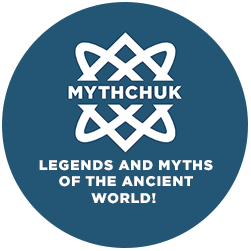Loki: Norse Trickster, Father of Monsters, and Herald of Ragnarök
- Main
- >
- Norse Mythology
- >
- Norse Pantheon of Gods
- >
- Loki
Loki: the one who made the gods laugh… and ultimately betrayed them. But why are his children true monsters? You’ll find out at the end.
Who is Loki?
Loki is one of the most enigmatic and controversial figures in Norse mythology. Though not one of the Aesir, he lived among them in Asgard. His father was the giant Fárbauti, and his mother Laufey. Loki is the god of mischief, shapeshifting, and cunning. His name is often interpreted as “to close” or “knot.” With his cleverness, he frequently caused disasters — and just as often fixed them using the same trickery.
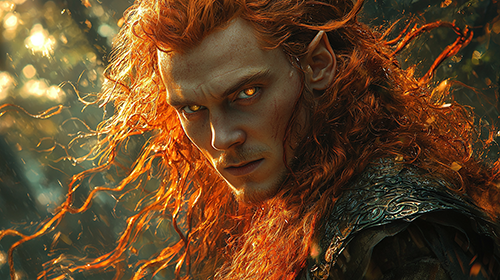 Loki
LokiLoki’s Story: From Birth to Doom
Loki was born among the Jötnar (giants), in Jötunheimr, the world opposed to the gods. Despite not being one of the Aesir, the Poetic Edda tells us he was welcomed into Asgard due to a blood oath with Odin. It wasn’t out of goodness, but mutual benefit: Loki possessed knowledge useful to the gods.
From the start, he was a dual-natured being — cheerful and witty, but also destructive and dangerous. In the Prose Edda, he is called the "slanderer of the gods", which speaks volumes about his role.
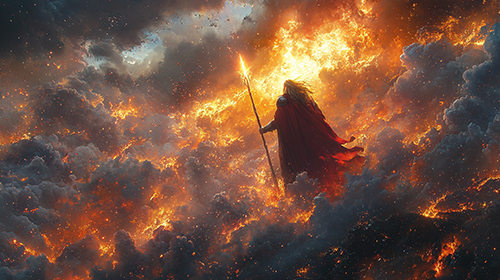 Gungnir
GungnirThe Creation of the Gods’ Greatest Treasures
One of Loki’s most memorable tales is how he inadvertently caused the forging of the gods’ greatest artifacts. After he mischievously cut the golden hair of Sif, Thor’s wife, Loki sought out the dwarves to avoid Thor’s wrath. From this came:
- Mjölnir – Thor’s hammer
- Gungnir – Odin’s spear
- Draupnir – Odin’s gold-multiplying ring
- Golden hair for Sif
- Skíðblaðnir – Freyr’s foldable ship
- Gullinbursti – Freyr’s golden-boar
All of these were created because of one prank — not out of generosity, but to save his own skin.
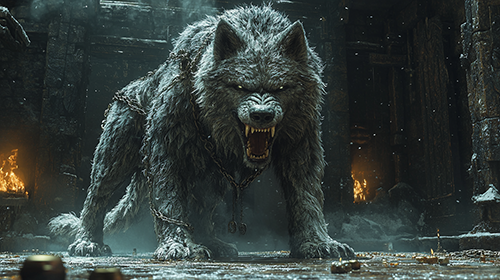 Fenrir
FenrirThe Birth of Monsters
Loki had many children, but three of them changed the fate of the Norse cosmos. Though married to Sigyn, he fathered three monstrous offspring with the giantess Angrboða:
- Fenrir, the wolf feared even by the Aesir
- Jörmungandr, the world serpent that encircles Midgard
- Hel, the ruler of the realm of the dead
When Odin learned of these children, he had them dealt with: Hel was banished to Niflheim, Jörmungandr thrown into the sea, and Fenrir raised in Asgard until he grew too dangerous and was bound with the magical chain Gleipnir.
These three beings became harbingers of doom — each destined to play a vital role in Ragnarök, the final battle of the gods.
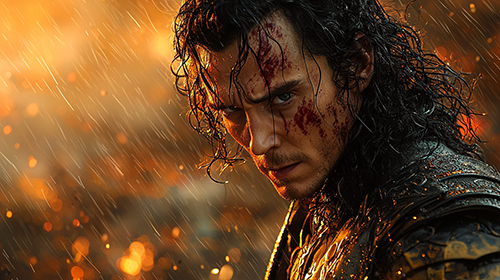 Ragnarök
RagnarökBetrayal and Ragnarök
Loki’s most infamous act was orchestrating the death of the fairest god — Baldr. When every creature swore never to harm Baldr, only mistletoe was overlooked. Loki fashioned a dart from it and tricked Baldr’s blind brother Höðr into throwing it, killing him.
This crime enraged the gods. According to the Poetic Edda, Loki was captured and bound to a rock. A serpent was suspended above him, its venom dripping onto his face. His devoted wife Sigyn held a bowl to catch the venom, but when she emptied it, a drop would fall — causing Loki to writhe in pain. These convulsions, it was believed, caused earthquakes.
But his story doesn't end there. During Ragnarök, Loki breaks free. He leads the army of the dead and giants into battle. He and Heimdallr, the watchman of the gods, will slay each other in the final clash.
 The Symbol of Chaos and Transformation
The Symbol of Chaos and TransformationThe Symbol of Chaos and Transformation
Loki is more than a trickster — he is the personification of chaos, change, and disruption. He brings about destruction, but also clears the way for renewal. Ancient texts don’t label him as wholly good or evil. He is a force, one that unravels stagnant order.
His tools are deception, transformation, and a silver tongue. He could become a mare, a fish, or even a woman — his shapeshifting served both creation and ruin, often simultaneously.
Modern portrayals romanticize or simplify him, but original sources depict a far more complex figure. Loki is a catalyst, heralding the end of the old world — so that a new one might rise after Ragnarök.
